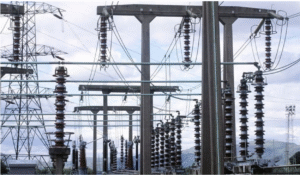 Photo Credit: Adrian Greeman/Construction Photography/Avalon/Getty Images
Photo Credit: Adrian Greeman/Construction Photography/Avalon/Getty Images
Grid Rules
Electricity prices are increasing, demand is increasing, and the interconnection systems in place have not kept up with changes to markets and technology. Everyone is concerned and upset about how we manage the grid and interconnect new projects and how we accommodate new load growth (which is a mix of things, but data centers get the headlines). The largest grid operator, PJM, proposed some new rules to try to address this; the only thing stakeholders may have had in common was that everyone was against what they proposed (which would have enabled them to turn off service to data centers at times of peak grid stress). The Governor of Pennsylvania sued PJM and Governors across the PJM footprint (and across the political spectrum) are starting a new collaborative to coordinate their shared interests.
These problems have been a long time coming, but now that they are highly salient because of electricity price increases there is dramatically increased attention from policymakers (even if many of the near term price increases have more to do with distribution system investments, there is also increased consumer awareness of the AI/data center boom). And this increased attention and salience will lead to action. It was a sleepy issue, now it’s a political issue, which doesn’t mean it will be solved optimally, but it will definitely be focused on and addressed in some way.
 Photo Credit: Hitachi Energy
Photo Credit: Hitachi Energy
Supply Chain Constraints Precede Manufacturing Investment
A major recent supply chain constraint has been the availability of natural gas turbines, with unexpected recent increased demand pushing wait times out towards the end of the decade. Perhaps unsurprisingly, one of the three major suppliers, Mitsubishi Heavy Industry, announced plans to double capacity over the next couple of year. Elsewhere in the land of supply chain constraints, Hitachi Energy is expanding manufacturing of power transformers in Virginia, which will be the largest such facility in the country when it is complete.
Hard Problems
One of my favorite journalists Matt Yglesias recently shared a post about how climate philanthropy has overindexed on electoral climate advocacy and should be more focused on hard problems in climate technology innovation (specifically for hard to abate sectors like steel, cement, fertilizer, and aviation fuel). I couldn’t agree more!
Be Sure To Finish Your Helping of Rare Earths
Phytomining company, Genomines raised a large $45 millions Series A round to develop solutions to mine battery grade nickel from genetically enhanced plants. This is a space that sits at the intersection of biomanufacturing and rare earths supply chain.
Folks are trying any and all paths to solidifying rare earths supply chain, across:
- Building big new mines (like MP Materials)
- Extraction from waste streams like coal ash (like startup Rivalia Chemical)
- Extraction via plant hyperaccumulators (like this company, Geonomines)
- Not using rare earths in the stuff they are used in (like Niron Magnetics)
 Iron nitride manufactured by Niron Magnetics. Photo by Sara Rubinstein for General Motors
Iron nitride manufactured by Niron Magnetics. Photo by Sara Rubinstein for General Motors
Giving the Iron Range New Meaning
Speaking of Niron, Minnesota-based Niron Magnetics broke ground on a new manufacturing facility in Minnesota to develop their innovative rare earth-free permanent magnets made from iron and nitrogen
Throw some salt over your shoulder
Sodium Ion battery maker Natron Energy shut down after raising several hundred million dollars. This comes on the heels of another earlier stage sodium ion battery innovator, Bedrock Materials (an Evergreen portfolio company), deciding to wind down operations and return money to investors because they didn’t think they would end up being able to compete with the declining cost of LFP batteries. Cheaper LFP batteries are great for almost everyone, but not sodium ion battery companies (whose value prop is pretty similar to real cheap LFP batteries).
Other News
- Arizona utility Salt River Project (SRP) is collaborating with Google on non-lithium ion long duration energy storage (LDES). If you’re curious, here’s the LDES research we’ve previously shared on some of the challenges LDES currently faces.
- The One World Alliance (anchored by American Airlines in the United States) launched a $150 million fund with Breakthrough Energy to invest in sustainable aviation fuels (SAF) companies. Aviation fuel is a hard to decarbonize space, and numerous industrialized countries have policies in place to promote/require increasing volumes of SAF. Chicago airport competitor United Airlines has also been investing in SAF companies out of a fund that they operate.
- A number of innovation ecosystem stakeholders developed and launched the Climate Tech Atlas to help map out opportunities for climate tech innovation going forward.
- I’m not an expert on bird law, but I’m pretty sure wind turbines weren’t built with the goal of butchering migratory birds, which is what the Trump administration is currently suggesting.
Amazing data was recently shared that suggested Waymo vehicles were DRAMATICALLY better than human drivers at intersections – with 95% fewer injuries than humans.